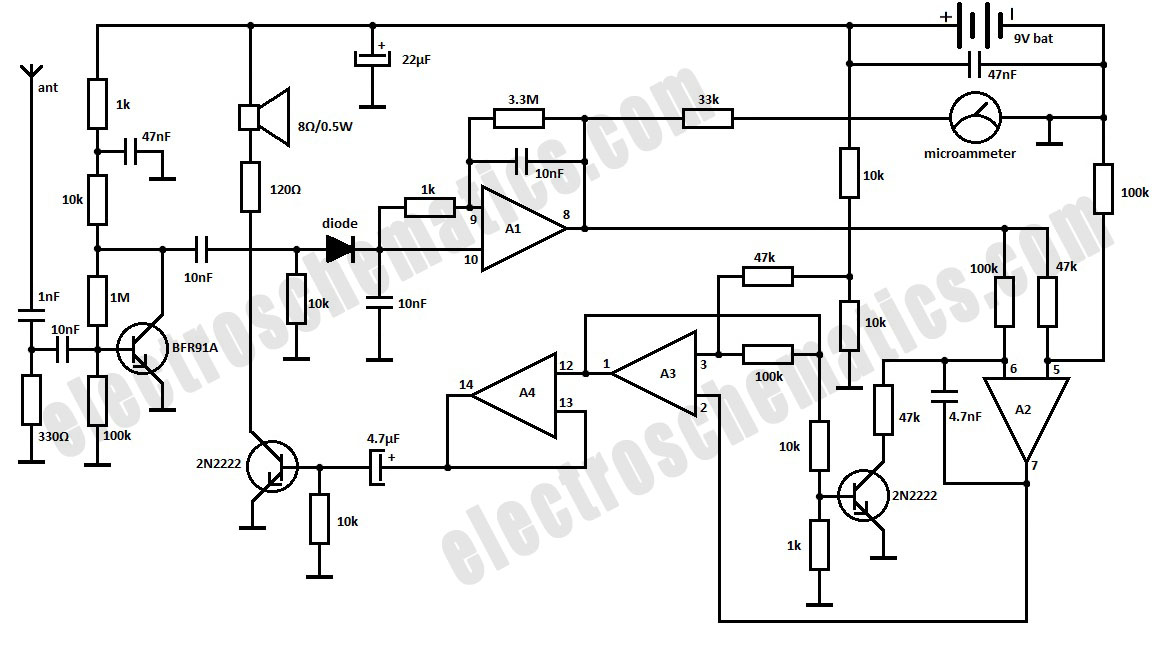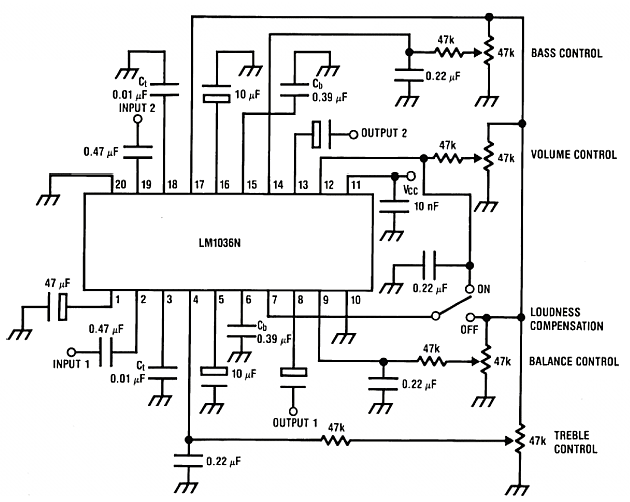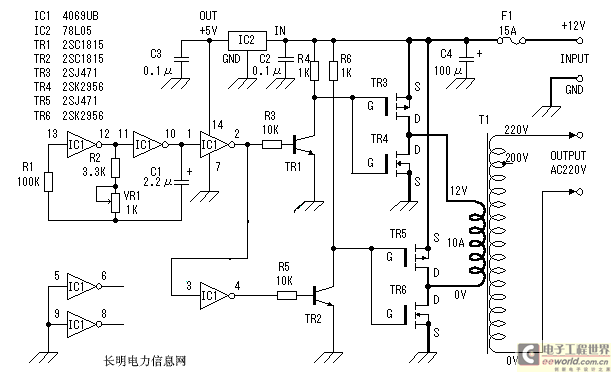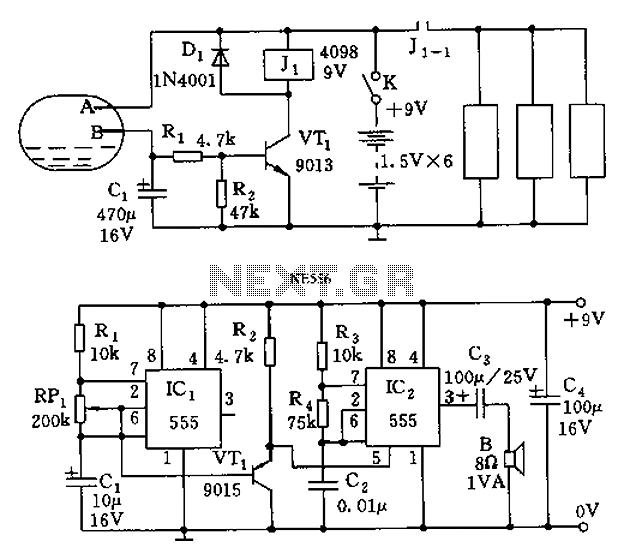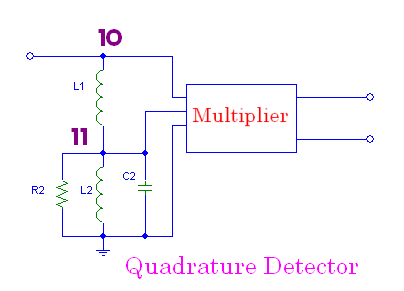
Adjustable Current Regulator Circuit Using LM117
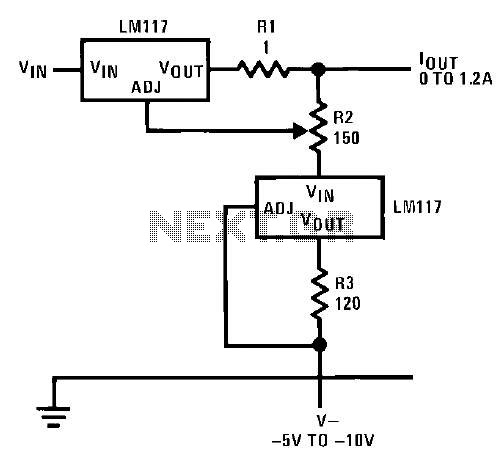
This circuit illustrates an adjustable regulator configuration that incorporates a voltage regulator. In this design, the LM117 regulator is utilized instead of the LM113 diode for reference. Both regulators necessitate a negative supply to function correctly with respect to ground. A circuit schematic accompanies this description.
The adjustable regulator circuit featuring the LM117 is designed to provide a stable output voltage that can be varied according to the requirements of the application. The LM117 is a popular choice for voltage regulation due to its ability to deliver a precise output voltage while accommodating a wide range of input voltages.
In this circuit, the LM117 operates in conjunction with a negative supply, which is essential for its proper functioning. The negative supply allows the circuit to maintain a reference point below ground, ensuring that the output voltage can be adjusted effectively. The adjustment is typically achieved through the use of external resistors, which set the desired output voltage level.
The LM117 is configured with two external resistors, R1 and R2, which form a voltage divider network. The output voltage (Vout) can be calculated using the formula:
Vout = Vref * (1 + R2/R1) + Iadj * R2
where Vref is the reference voltage provided by the LM117 (approximately 1.25V), and Iadj is the adjustment pin current, typically negligible in most applications.
The circuit also includes bypass capacitors to stabilize the input and output voltages. A capacitor placed at the input helps filter any high-frequency noise from the supply voltage, while a capacitor at the output improves transient response and stability.
When designing this circuit, it is crucial to ensure that the power ratings of the resistors and capacitors are suitable for the expected load conditions. Additionally, thermal considerations must be taken into account, as the LM117 may require a heat sink for higher output currents to prevent overheating.
Overall, this adjustable regulator circuit with the LM117 provides a versatile solution for applications requiring variable voltage supply while maintaining high efficiency and stability.This circuit shows the adjustable regulator circuit is conjunction with a voltage regulator, but on this circuit using the LM117 regulator of alternative flows in addition to providing a reference, not a diode LM113. Both regulators currently require a negative supply to operate on the ground. Here is a circuit schematic: 🔗 External reference
The adjustable regulator circuit featuring the LM117 is designed to provide a stable output voltage that can be varied according to the requirements of the application. The LM117 is a popular choice for voltage regulation due to its ability to deliver a precise output voltage while accommodating a wide range of input voltages.
In this circuit, the LM117 operates in conjunction with a negative supply, which is essential for its proper functioning. The negative supply allows the circuit to maintain a reference point below ground, ensuring that the output voltage can be adjusted effectively. The adjustment is typically achieved through the use of external resistors, which set the desired output voltage level.
The LM117 is configured with two external resistors, R1 and R2, which form a voltage divider network. The output voltage (Vout) can be calculated using the formula:
Vout = Vref * (1 + R2/R1) + Iadj * R2
where Vref is the reference voltage provided by the LM117 (approximately 1.25V), and Iadj is the adjustment pin current, typically negligible in most applications.
The circuit also includes bypass capacitors to stabilize the input and output voltages. A capacitor placed at the input helps filter any high-frequency noise from the supply voltage, while a capacitor at the output improves transient response and stability.
When designing this circuit, it is crucial to ensure that the power ratings of the resistors and capacitors are suitable for the expected load conditions. Additionally, thermal considerations must be taken into account, as the LM117 may require a heat sink for higher output currents to prevent overheating.
Overall, this adjustable regulator circuit with the LM117 provides a versatile solution for applications requiring variable voltage supply while maintaining high efficiency and stability.This circuit shows the adjustable regulator circuit is conjunction with a voltage regulator, but on this circuit using the LM117 regulator of alternative flows in addition to providing a reference, not a diode LM113. Both regulators currently require a negative supply to operate on the ground. Here is a circuit schematic: 🔗 External reference
